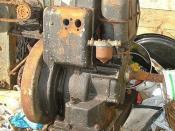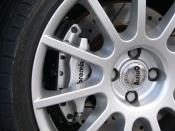The aim of this assignment is understand how come we can interact with the engine to get better results in terms of emissions, efficiency, and fuel consumption.
First of all it's necessary understand each emission, and what is causing it.
The 'celebrity' of the emissions today is for sure CO2, this emission is causing the global warming. This gas comes directly from the combustion process, and can't be eliminated when we're working with both, diesel or petrol engines, makes part of the reaction, and only can be reduced. There are two ways of reducing Co2 emissions, one is reducing the engine displacement, the other is improving the fuel economy, both of them are related with the quantity of fuel burned as less fuel we burn as few Co2 emissions we'll get.
Perfect Combustion:O2 + N2 (Air) + HC (Fuel) Co2+H2O+N2Unfinished Combustion:O2 + N2 (Air) + HC (Fuel) Co2+H2O+N2+Co+HC+NOxAs we can see on the combustion reactions Just CO2 is generated from the genuine reaction, the rest (HC, CO, and NOx) are produced because the engine doesn't burn all the fuel that is being injected, but we'll see further that we can reduce this emissions by manipulating the ignition time, changing the Air/Fuel ratio or using some combustion processes as CAI (controlled auto ignition) GDI (gasoline direct injection).
The present debate about reduction of CO2 emissions makes improvement of fuel consumption a central topic for gasoline engine developers.
A variety of technological solutions are available to realize this improvement. Concepts featuring direct fuel injection, engine downsizing and un-throttled control of engine load with variable valve trains are currently considered the most promising ways to achieve this goal, more concepts are under development include Controlled Auto Ignition (CAI) and homogenous lean-burn combustion as well as certain combinations of these technologies.


